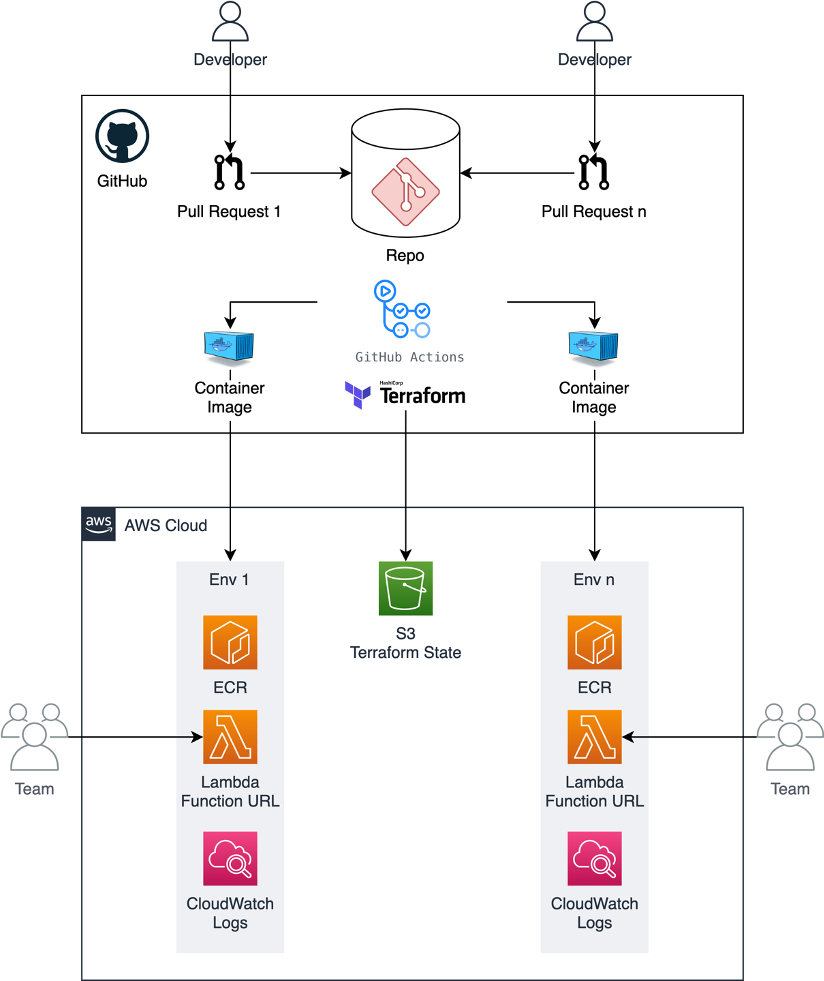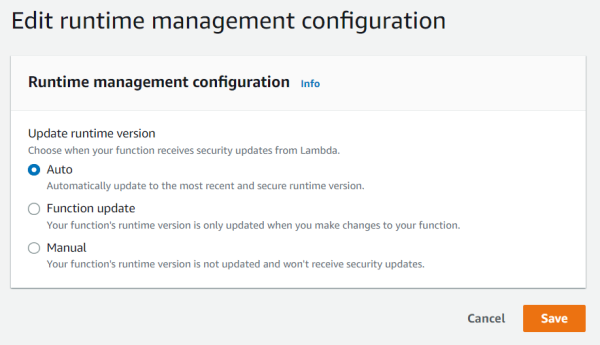AWS Compute Blog
Previewing environments using containerized AWS Lambda functions
This post is written by John Ritsema (Principal Solutions Architect) Continuous integration and continuous delivery (CI/CD) pipelines are effective mechanisms that allow teams to turn source code into running applications. When a developer makes a code change and pushes it to a remote repository, a pipeline with a series of steps can process the change. […]
Quick Restoration through Replacing the Root Volumes of Amazon EC2 instances
This blog post is written by Katja-Maja Krödel, IoT Specialist Solutions Architect, and Benjamin Meyer, Senior Solutions Architect, Game Tech. Customers use Amazon Elastic Compute Cloud (Amazon EC2) instances to develop, deploy, and test applications. To use those instances most effectively, customers have expressed the need to set back their instance to a previous state […]
Automating your workload deployments in AWS Local Zones
This blog post is written by Enrico Liguori, SA – Solutions Builder , WWPS Solution Architecture. AWS Local Zones are a type of infrastructure deployment that places compute, storage,and other select AWS services close to large population and industry centers. We now have a total of 32 Local Zones; 15 outside of the US (Bangkok, […]
Adopt Recommendations and Monitor Predictive Scaling for Optimal Compute Capacity
This post is written by Ankur Sethi, Sr. Product Manager, EC2, and Kinnar Sen, Sr. Specialist Solution Architect, AWS Compute. Amazon EC2 Auto Scaling helps customers optimize their Amazon EC2 capacity by dynamically responding to varying demand. Based on customer feedback, we enhanced the scaling experience with the launch of predictive scaling policies. Predictive scaling […]
Best practices for working with the Apache Velocity Template Language in Amazon API Gateway
This post is written by Ben Freiberg, Senior Solutions Architect, and Markus Ziller, Senior Solutions Architect. One of the most common serverless patterns are APIs built with Amazon API Gateway and AWS Lambda. This approach is supported by many different frameworks across many languages. However, direct integration with AWS can enable customers to increase the […]
Introducing AWS Lambda runtime management controls
This blog post is written by Jonathan Tuliani, Principal Product Manager. Today, AWS Lambda is announcing runtime management controls which provide more visibility and control over when Lambda applies runtime updates to your functions. Lambda is also changing how it rolls out automatic runtime updates to your functions. Together, these changes provide more flexibility in […]
AWS Lambda: Resilience under-the-hood
This post is written by Adrian Hornsby (Principal System Dev Engineer) and Marcia Villalba (Principal Developer Advocate). AWS Lambda comprises over 80 services working together to provide the serverless compute service that it offers to customers. Under the hood, many of these services are built on top of Amazon Elastic Compute Cloud (Amazon EC2) instances, […]
Processing geospatial IoT data with AWS IoT Core and the Amazon Location Service
This post is written by Swarna Kunnath (Cloud Application Architect), and Anand Komandooru (Sr. Cloud Application Architect). This blog post shows how to republish messages that arrive from Internet of Things (IoT) devices across AWS accounts using a replatforming approach. A replatforming approach minimizes changes to the core application architecture, allowing an organization to reduce […]
Introducing maximum concurrency of AWS Lambda functions when using Amazon SQS as an event source
This blog post is written by Solutions Architects John Lee and Jeetendra Vaidya. AWS Lambda now provides a way to control the maximum number of concurrent functions invoked by Amazon SQS as an event source. You can use this feature to control the concurrency of Lambda functions processing messages in individual SQS queues. This post […]
Building Sustainable, Efficient, and Cost-Optimized Applications on AWS
This blog post is written by Isha Dua Sr. Solutions Architect AWS, Ananth Kommuri Solutions Architect AWS, Dr. Sam Mokhtari Sr. Sustainability Lead SA WA for AWS, and Adam Boeglin, Principal Specialist EC2 Sustainability. Today, more than ever, sustainability and cost-savings are top of mind for nearly every organization. Research has shown that AWS’ infrastructure […]









